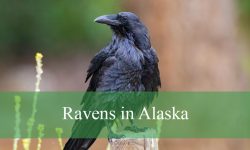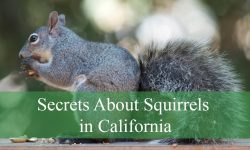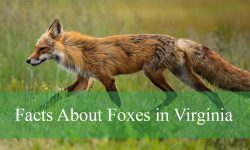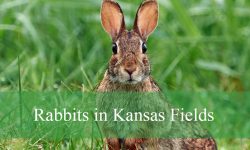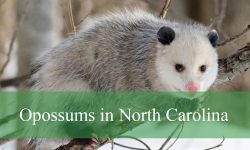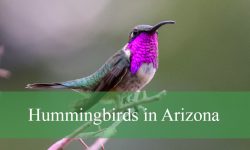Birds with Yellow Bellies in Texas bring vibrant splashes of color to backyards, fields, and forests across the state. From striking kingbirds to delicate warblers, these beautiful species are a delight for birdwatchers. Their bright plumage and lively behaviors make them some of the most noticeable birds in Texas.
Identifying a bird with yellow belly in Texas can be exciting, especially when you know where to look. Some species stay year-round, like the Great Kiskadee, while others, such as the Yellow Warbler, migrate through during certain seasons. Each bird has unique markings, songs, and habits that make identification easier for beginners and experienced birders alike.
This guide introduces 24 birds with yellow bellies in Texas, complete with pictures and identification tips. Exploring nature trails or observing from your backyard will reveal just how colorful and diverse Texas birdlife can be.
Common Birds with Yellow Bellies in Texas
American Goldfinch
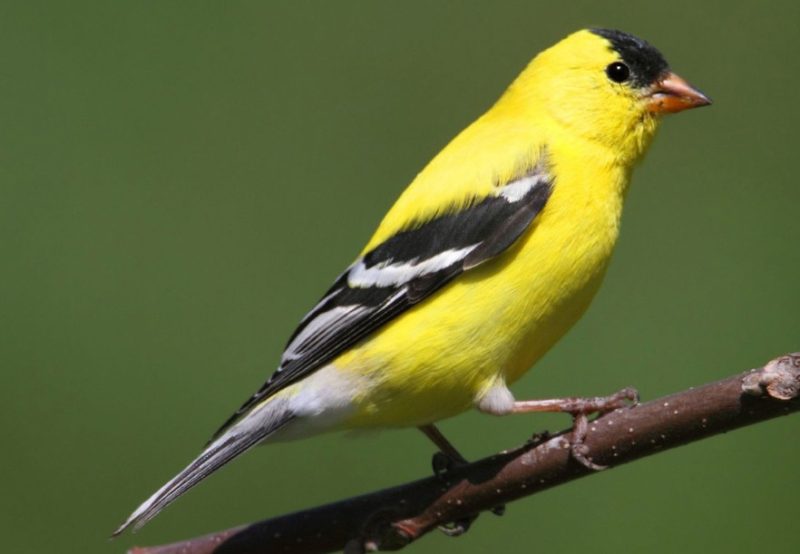
The American Goldfinch is a small finch distinguished by its brilliant yellow plumage and striking black wings with white markings in males during the breeding season. Females, on the other hand, have duller yellow-brown coloration, allowing them to blend more easily into their surroundings. Both sexes have conical, seed-crushing bills and a distinctive short, notched tail. Adults typically measure about 4.3 to 5.1 inches in length with a wingspan of 7.5 to 8.7 inches.
In Texas, American Goldfinches are commonly seen at backyard feeders, especially from spring through fall when they are most active. They are particularly fond of sunflower and thistle seeds, often gathering in small flocks while feeding. Their undulating flight pattern and cheerful “po-ta-to-chip” call make them easy to recognize even from a distance.
These birds prefer open habitats such as fields, meadows, and suburban gardens where seed-bearing plants thrive. During migration, they may also be found in weedy areas and along forest edges. In Texas, they are more common in the northern and central regions but can be spotted statewide during peak seasons.
Lesser Goldfinch
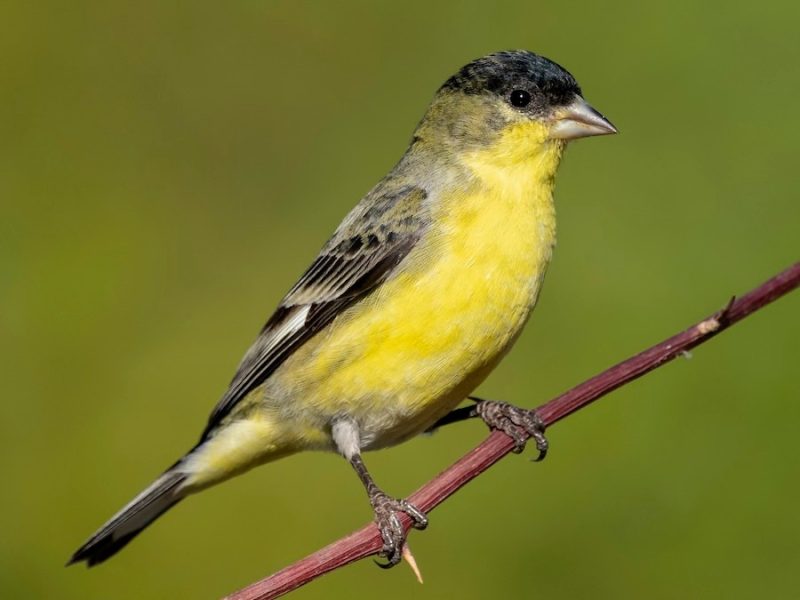
The Lesser Goldfinch is slightly smaller than its American counterpart, measuring around 3.5 to 4.3 inches long with a wingspan of 7 to 8 inches. Males display glossy black upperparts, a black cap, and vibrant yellow underparts, while females and juveniles show olive backs and pale yellow bellies. The species can be identified by its slender body, short conical bill, and quick, darting flight.
In Texas, these goldfinches are frequently seen at backyard feeders, often arriving in noisy flocks. They feed on seeds from sunflowers, dandelions, and thistles and are active and restless, constantly hopping among plants. Their high-pitched, twittering calls are a common sound wherever they gather.
The Lesser Goldfinch is found statewide, especially in open woodlands, scrublands, and suburban areas. They are more abundant in central and southern Texas, where warm climates and abundant seed sources provide ideal feeding grounds. Their adaptability to both natural and urban habitats makes them a familiar sight throughout the year.
Yellow Warbler
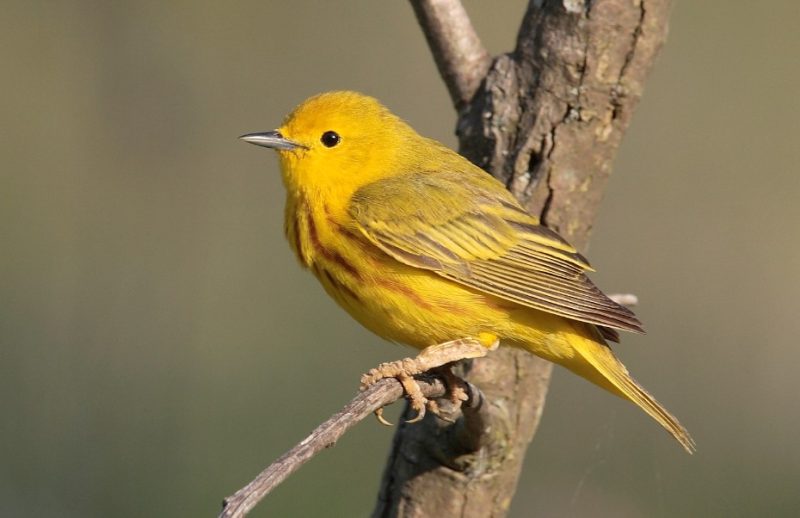
The Yellow Warbler is a small, bright yellow songbird, measuring about 4.7 to 5.1 inches long with a wingspan of 6.3 to 7.9 inches. Males are easily identified by faint reddish streaks running down their chest, while females are slightly duller but still retain a rich yellow coloration. Both have slender, pointed bills and rounded heads typical of warblers.
These birds are most commonly seen in Texas during spring and fall migration, moving through the state in search of breeding or wintering grounds. Their sweet, whistled “sweet-sweet-sweet, I’m so sweet” song often reveals their presence before they are spotted. They are active foragers, flitting among branches in search of insects and caterpillars.
Yellow Warblers prefer shrubby habitats, riparian woodlands, and edges of wetlands. In Texas, they are widespread during migration and can be found across most regions, particularly near streams and areas with dense vegetation. They are not permanent residents but are a delight for birdwatchers during migration seasons.
Common Yellowthroat
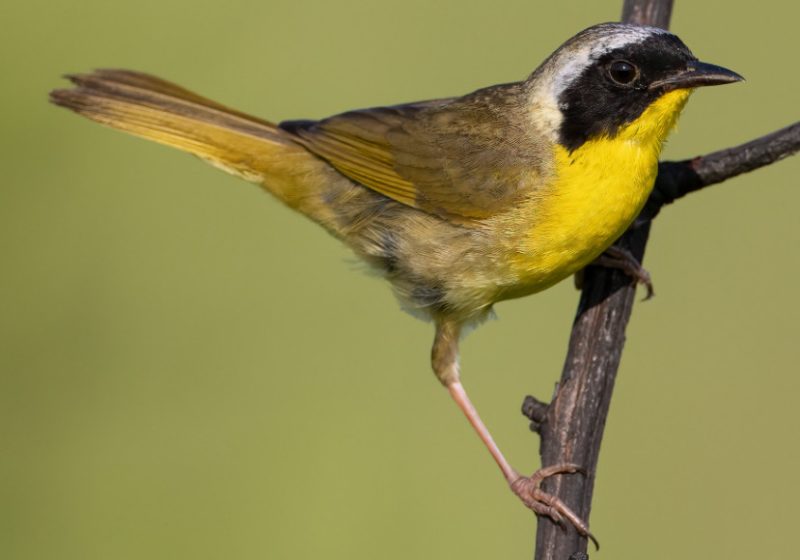
The Common Yellowthroat is a small warbler recognized by its olive-green back, bright yellow throat and belly, and distinctive black facial mask in males. Females lack the black mask and have plainer olive and yellow plumage. Adults measure around 4.3 to 5.1 inches in length with a wingspan of 5.9 to 7.5 inches.
In Texas, Common Yellowthroats are active and secretive, often skulking in dense shrubs and low vegetation. They are known for their quick, chattering “wichity-wichity-wichity” song, which helps birders locate them despite their tendency to remain hidden. Their diet consists mainly of insects and spiders, which they glean from leaves or catch in quick aerial sallies.
These warblers are most commonly found near wetlands, marshes, and damp thickets. In Texas, they are widespread during migration and breeding seasons, particularly in the eastern and coastal regions where wetlands are abundant. Some populations may overwinter in the southern parts of the state.
Prothonotary Warbler
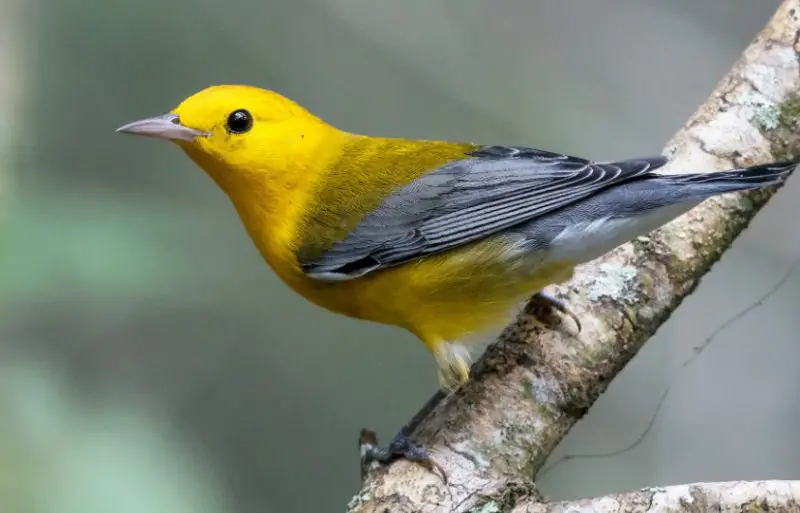
The Prothonotary Warbler is a striking bird with a bright golden-yellow body contrasted by bluish-gray wings and tail. Its black, slender bill and round head add to its distinctive appearance. Adults are medium-sized warblers, measuring about 5.1 inches in length with a wingspan of 8.7 inches.
In Texas, Prothonotary Warblers are typically found along wooded streams, swamps, and flooded forests. They are cavity-nesting warblers, often using old woodpecker holes or nest boxes. Their clear, ringing “sweet-sweet-sweet-sweet” song is a familiar sound in their preferred habitats during the breeding season.
These warblers are more common in eastern Texas, where suitable bottomland hardwood forests and wetland habitats are abundant. They forage for insects, spiders, and occasionally snails, creeping along branches and tree trunks in search of prey. During migration, they may also appear in coastal regions before heading south for the winter.
Pine Warbler
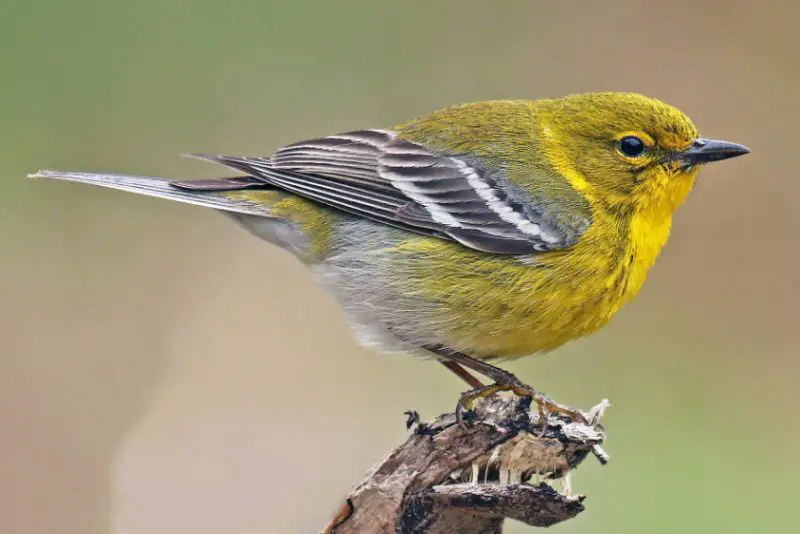
The Pine Warbler is a plump, medium-sized warbler, easily identified by its yellow belly, greenish-olive back, and faint streaking on the sides. Males tend to be brighter yellow, while females and juveniles are duller with grayish tones. Adults typically measure 5.1 to 5.5 inches in length with a wingspan of about 7.5 to 9.1 inches. Its sturdy build and slightly longer bill help distinguish it from other warblers.
In Texas, Pine Warblers are often seen foraging high in pine trees, where they search for insects, caterpillars, and seeds. Unlike many other warblers, they occasionally eat pine seeds, especially in winter. Their musical trill, which is a fast, even-pitched series of notes, is a familiar sound in pine woodlands.
These warblers prefer mature pine forests, pine-oak woodlands, and areas with scattered pines. In Texas, they are most commonly found in the eastern parts of the state where pine habitats are abundant. They are year-round residents in some areas but are more noticeable during the breeding season when their singing is frequent.
Yellow-rumped Warbler
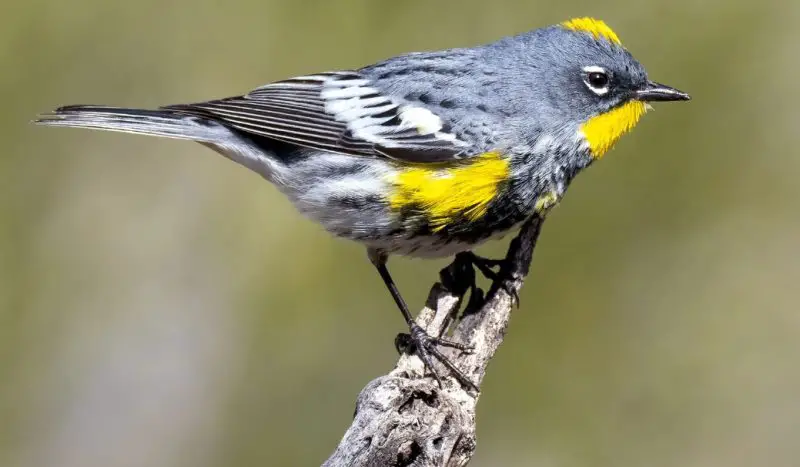
The Yellow-rumped Warbler is a medium-sized songbird recognized by its yellow rump, yellow belly, and streaked gray-brown body. Breeding males are more vibrant, with dark streaks and a bluish-gray back, while females and winter birds appear browner and duller. They measure around 4.7 to 5.9 inches in length with a wingspan of 7.5 to 9.1 inches.
These warblers are active and restless, often flitting through trees or making short flights to catch insects. In winter, they switch to a diet of berries, especially wax myrtle, which gives them the nickname “Myrtle Warbler.” Their sharp “check” calls and sweet, trilling songs help birders locate them in flocks.
In Texas, Yellow-rumped Warblers are common winter migrants, found statewide in forests, parks, and suburban yards. They are especially abundant along the Gulf Coast and eastern woodlands, where they gather in mixed-species flocks during the cooler months.
Yellow-breasted Chat
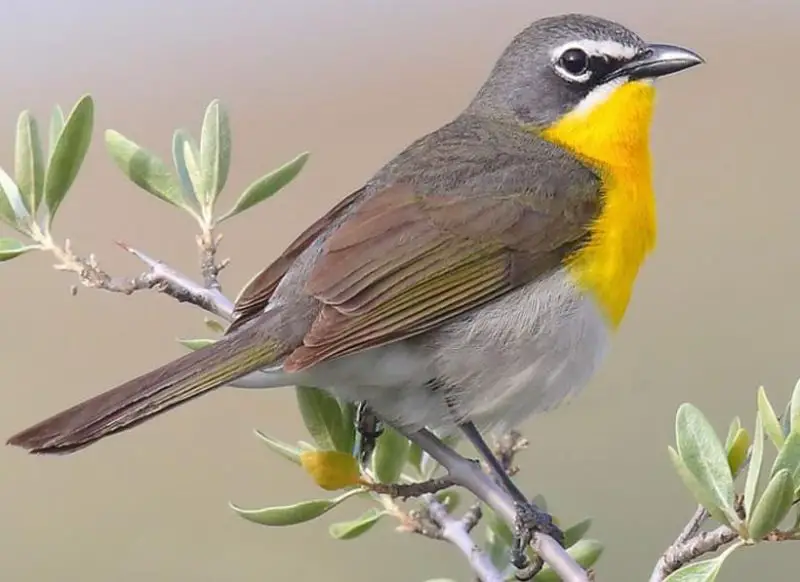
The Yellow-breasted Chat is the largest warbler in North America, with a bright yellow chest, olive-green back, and a distinct white eye-ring. Its long tail, thick bill, and robust body set it apart from smaller, slimmer warblers. Adults measure about 7.1 inches in length with a wingspan of 9.8 to 10.6 inches.
This species is known for its unusual and varied vocalizations, including whistles, clucks, and harsh chattering notes. Males often sing from hidden perches or perform display flights while delivering their calls. Chats are secretive and prefer dense shrubs and thickets, making them more often heard than seen.
In Texas, Yellow-breasted Chats are most common in brushy habitats, woodland edges, and riparian thickets. They breed in much of the state, especially in the eastern and central regions, and are usually present from spring through late summer before migrating south.
Yellow-bellied Sapsucker
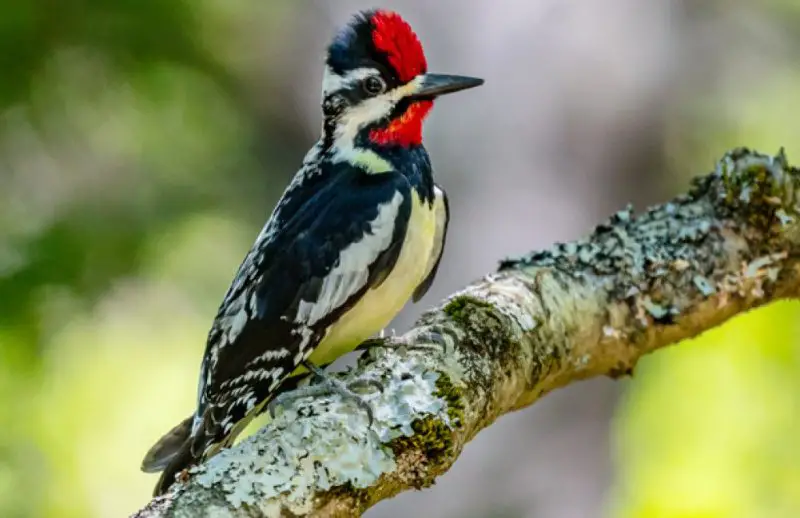
The Yellow-bellied Sapsucker is a medium-sized woodpecker with a pale yellow belly, black-and-white patterned back, and a red forehead and throat (males). Females lack the red throat but share the same overall markings. Adults are about 7.1 to 8.7 inches long with a wingspan of 13.4 to 15.8 inches.
This woodpecker drills neat rows of small holes in tree bark to feed on sap and insects attracted to the sap wells. Their drumming is slower and more irregular compared to other woodpeckers. They also consume berries and occasionally insects they glean from bark.
In Texas, Yellow-bellied Sapsuckers are winter residents, most frequently seen along the Upper Texas Coast and in wooded areas throughout the eastern half of the state. They favor deciduous forests, orchards, and parks where suitable trees for sap feeding are available.
Western Kingbird
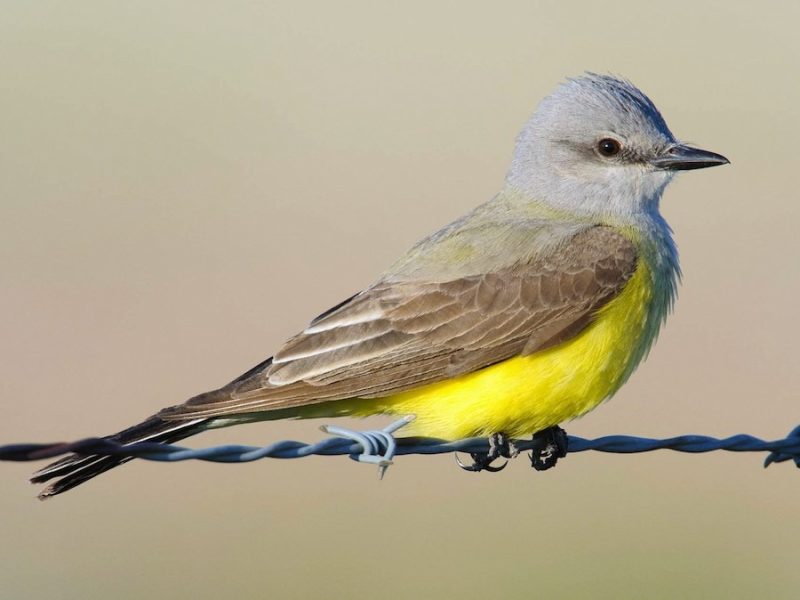
The Western Kingbird is a striking flycatcher with a gray head, pale throat, bright yellow belly, and contrasting black-and-white tail. Its robust body, broad chest, and upright perching posture make it easy to spot. Adults average 7.9 to 9.4 inches in length with a wingspan of 15 to 16.1 inches.
Known for its aggressive behavior, the Western Kingbird often chases away larger birds, including hawks, from its territory. It perches conspicuously on fences, power lines, or shrubs, darting out to snatch insects in midair. Its sharp, squeaky “kip” calls are commonly heard during summer.
In Texas, Western Kingbirds are widespread during the breeding season, especially in open fields, grasslands, and roadsides. They are frequently seen across the western and central parts of the state but can also occur in suburban areas with scattered trees. Many migrate south in winter, leaving Texas by late fall.
Couch’s Kingbird
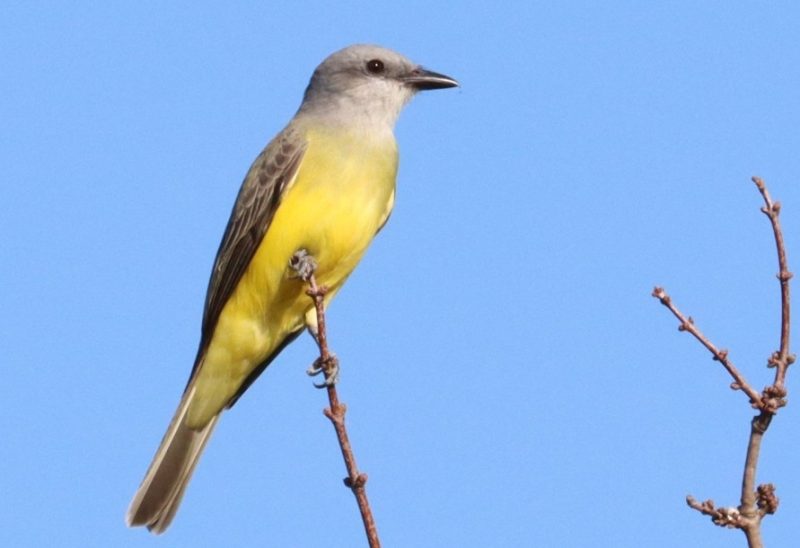
Couch’s Kingbird closely resembles the Western Kingbird but can be distinguished by its brighter yellow belly and greener back. It has a gray head, dark eyes, and a sturdy black bill, with white edges on its dark tail feathers. Adults are relatively large flycatchers, measuring about 7.9 to 9 inches in length with a wingspan of 15 to 16 inches.
This species is an active and bold insect hunter, often perching prominently on wires or treetops before swooping out to catch flying insects. Its calls are a key identifying feature, consisting of sharp, rolling “pit-chup” or “kip” notes, which are louder and more varied than those of the Western Kingbird.
In Texas, Couch’s Kingbirds are mainly restricted to the Rio Grande Valley and southernmost regions. They favor open woodlands, riparian areas, and savannas with scattered trees, often near water sources. Unlike many kingbirds, some populations remain in South Texas year-round.
Great Kiskadee
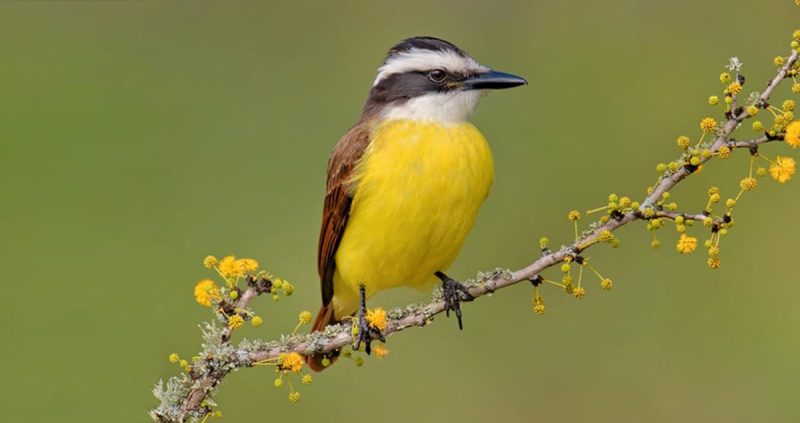
The Great Kiskadee is a large, striking flycatcher with a bright yellow belly, bold black-and-white striped head, and chestnut wings. Its thick bill and stocky build give it a distinctive appearance among Texas flycatchers. Adults typically measure 8.7 to 10.2 inches in length with a wingspan of about 15 to 17 inches.
This bird is known for its loud, piercing “kis-ka-dee” call, from which it gets its name. It feeds not only on insects but also on small fish, fruits, and even frogs, making it more omnivorous than most kingbirds. Great Kiskadees are often seen perching on exposed branches or darting quickly after prey.
In Texas, they are common in South Texas, particularly in the Rio Grande Valley. They inhabit open woodlands, edges of forests, and urban parks with tall trees. Their bold personality and noisy behavior make them easy to spot and hear in their preferred habitats.
Scott’s Oriole
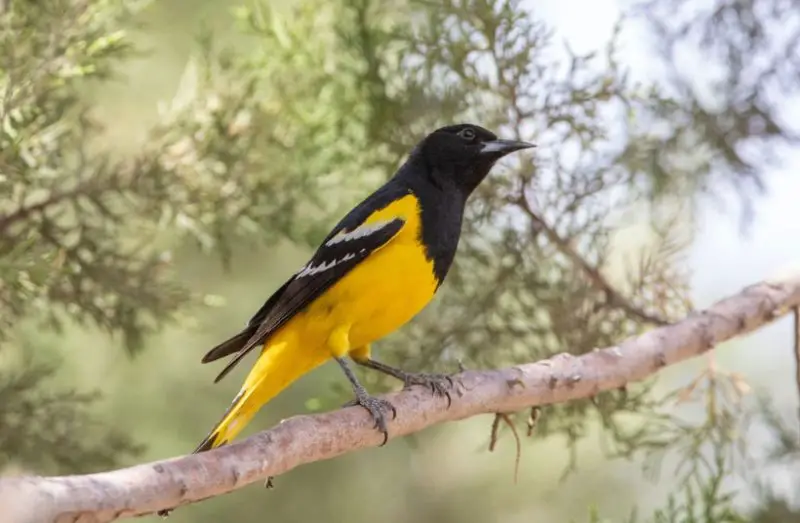
The Scott’s Oriole is a medium-sized oriole with striking coloration. Males are jet black on the head, back, and chest, with bright lemon-yellow underparts, while females have a more subdued yellow-olive plumage with grayish tones. Adults average 8.3 to 9.4 inches in length with a wingspan of 12 to 13 inches.
These orioles are often seen foraging methodically for insects among agave and yucca plants, and they are also known to sip nectar or feed on fruits. Their flutelike song, a series of clear whistles, is often heard in open desert scrub.
In Texas, Scott’s Orioles are most frequently observed in West Texas and along the Rio Grande brush country. They prefer arid habitats, including desert foothills and rocky slopes with scattered yuccas or junipers. They are present mainly during spring and summer for breeding.
Orchard Oriole (female)
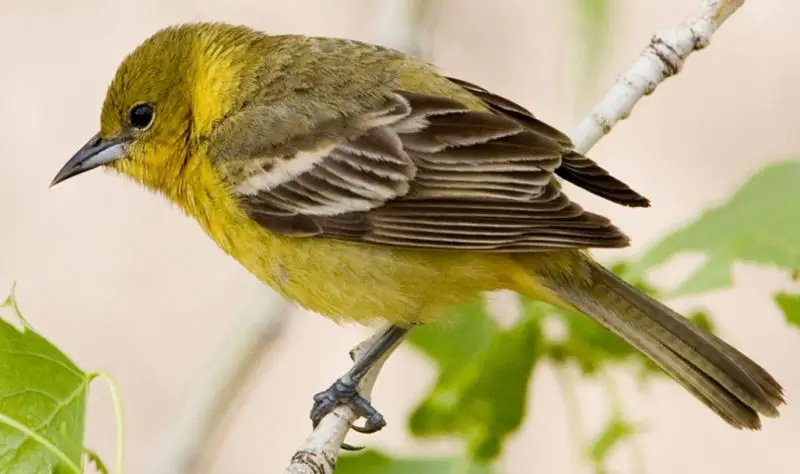
The female Orchard Oriole has a soft yellow belly and an olive-green back, providing excellent camouflage among foliage. She is smaller and slimmer than many other orioles, measuring 5.9 to 7.1 inches in length with a wingspan of 9.8 to 11.8 inches. Males, by contrast, are deep chestnut with black wings and head.
Orchard Orioles are agile foragers, gleaning insects from leaves and occasionally sipping nectar or eating berries. Their whistling song consists of a series of rich, sweet notes delivered rapidly. Females build pendant, woven nests hanging from tree branches, often in open woodlands.
In Texas, these orioles are common summer breeders, especially in the eastern and central parts of the state. They prefer open woodlands, orchards, and river edges where tall shade trees are abundant. They migrate south by late summer.
Audubon’s Oriole
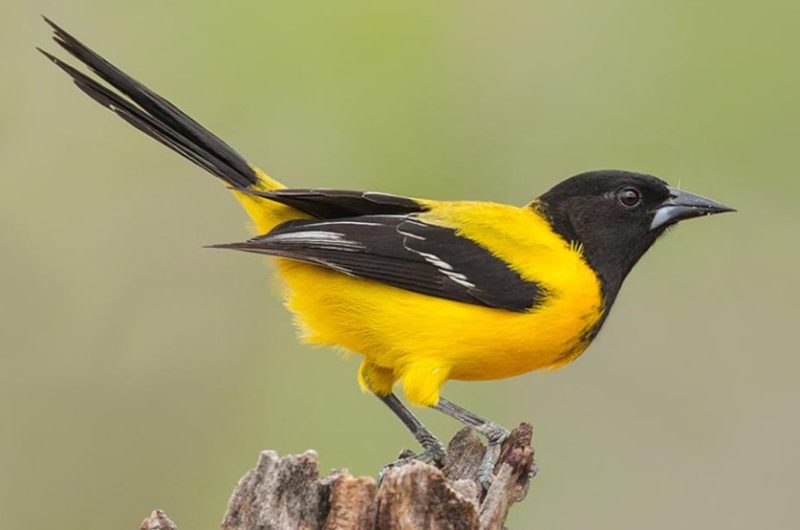
Audubon’s Oriole is a striking songbird with a glossy black head, throat, and upper back, contrasting with its bright yellow belly and olive-green wings. Its long tail and sturdy body give it a distinctive silhouette. Adults are about 7.5 to 9 inches long with a wingspan of 12 to 13 inches.
This oriole is a secretive species, moving slowly through dense brush as it forages for insects, fruits, and nectar. Its song is a series of low, whistled phrases, often delivered from hidden perches. Despite its bold coloring, it can be surprisingly difficult to spot in thick vegetation.
In Texas, Audubon’s Orioles are mainly restricted to the South Texas brushlands, particularly in Hidalgo and surrounding areas. They favor dense thorn scrub, riparian woodlands, and shaded areas near water. Unlike many orioles, they are non-migratory and remain in Texas year-round.
Eastern Meadowlark
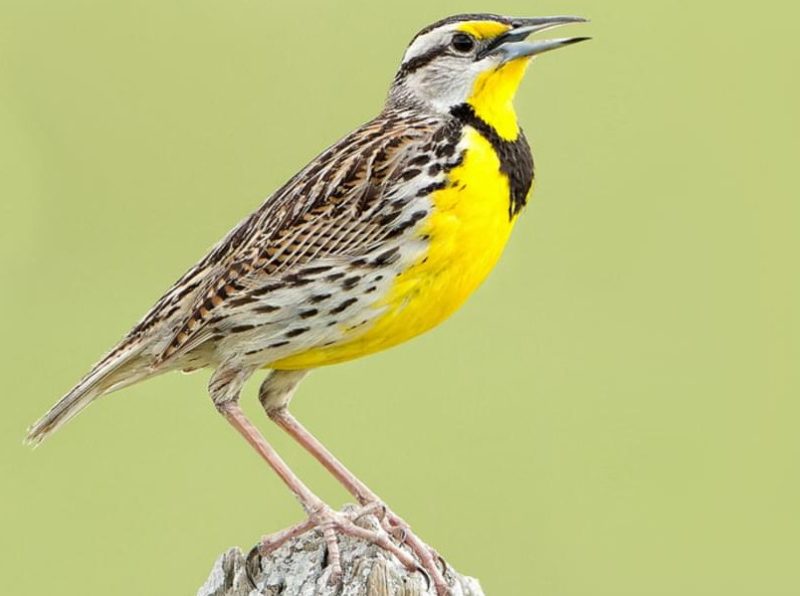
The Eastern Meadowlark is a large, ground-dwelling songbird with a brown and white striped back, a bright yellow chest, and a distinct black “V” across its breast. Its short tail and long, pointed bill make it easy to recognize in open fields. Adults typically measure 7.5 to 10.2 inches in length with a wingspan of 13.8 to 15.8 inches.
This species is known for its clear, flute-like whistles, often delivered from fence posts or tall grasses. Eastern Meadowlarks forage on the ground, feeding mainly on insects and seeds, and are often seen walking rather than hopping. Their distinctive songs help define territories during the breeding season.
In Texas, Eastern Meadowlarks are widespread across grasslands, pastures, and agricultural fields. They are permanent residents in much of the state, especially in central and eastern regions where open grassy habitats are common.
Western Meadowlark
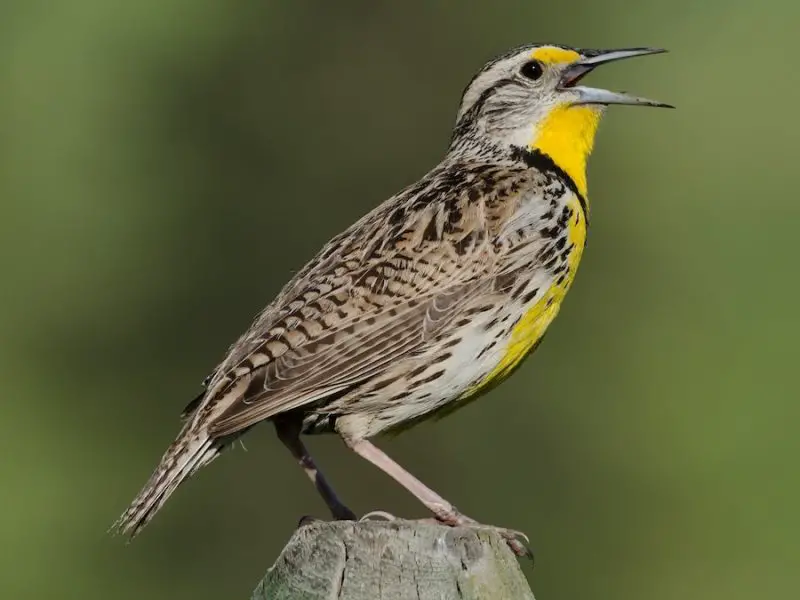
The Western Meadowlark closely resembles the Eastern Meadowlark, with similar streaked brown back, yellow chest, and black “V” on the breast. However, it can be identified by its slightly paler plumage and more vibrant, flute-like, gurgling song. Adults average 6.3 to 10.2 inches long with a wingspan of 16 inches.
Western Meadowlarks often forage in the same way as their eastern relatives, walking through grasslands in search of insects and seeds. During breeding season, males sing from prominent perches, and their melodious calls are a key distinguishing feature.
In Texas, they are primarily found in the western and northern parts of the state, preferring prairies, rangelands, and open fields. Some overlap with Eastern Meadowlarks occurs in central Texas, but they are more common in drier, open areas.
Yellow-headed Blackbird
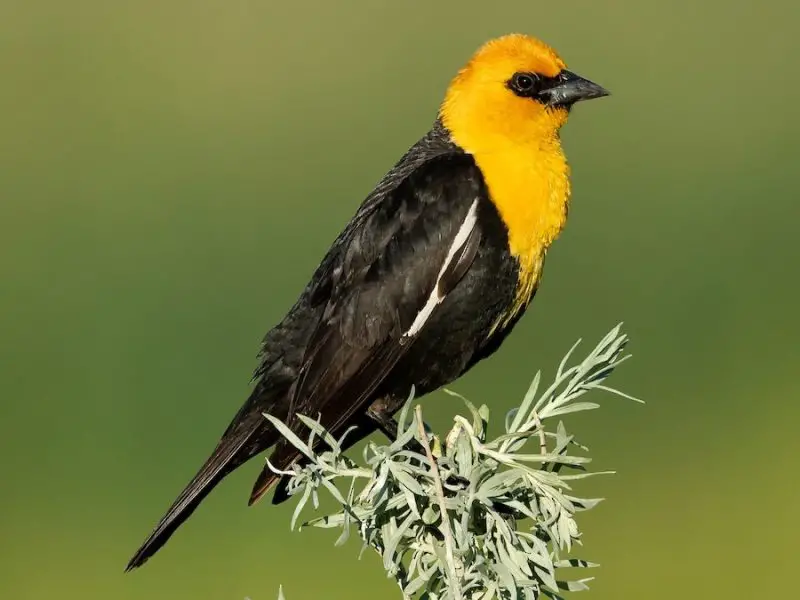
The Yellow-headed Blackbird is a striking blackbird with a bright yellow head and chest contrasting sharply against its glossy black body and wings. Males are bold in color, while females have duller, brownish plumage with less vibrant yellow. Adults measure 8.3 to 10.2 inches long with a wingspan of 16 to 17 inches.
This species is social, often foraging in flocks with other blackbirds and feeding on insects, grains, and seeds. Their harsh, creaking calls are distinctive and quite different from the musical songs of other blackbirds. During the breeding season, males perform conspicuous displays in marshes.
In Texas, Yellow-headed Blackbirds are mainly seen during migration, frequenting marsh edges and wetlands. They are more common in the Panhandle and western regions but can appear in other parts of the state in fall and spring.
Evening Grosbeak
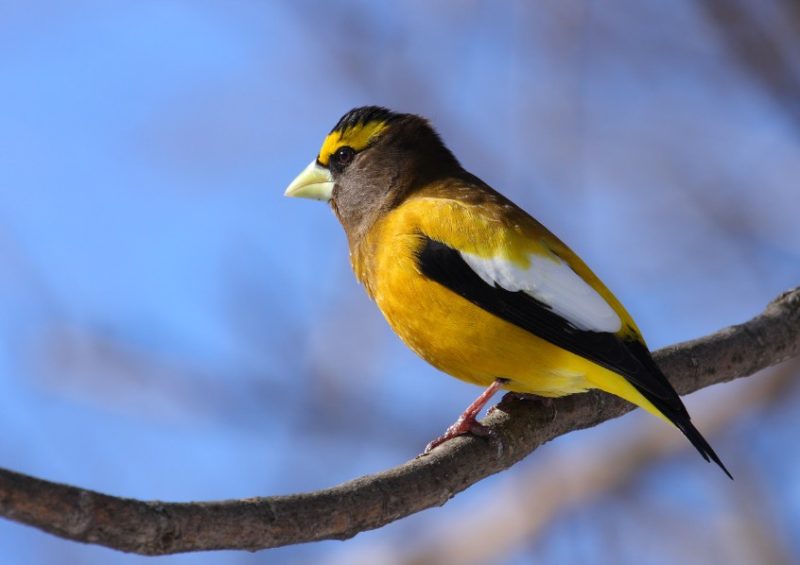
The Evening Grosbeak is a stocky finch with a bright yellow breast, thick pale bill, and bold black-and-white wings. Males are striking with a yellow eyebrow stripe, while females are more subdued with grayish-brown upperparts and pale yellow undersides. Adults typically measure 6.3 to 7.1 inches in length with a wingspan of 11.8 to 14 inches.
This bird is primarily a seed and berry eater, using its strong bill to crack open hard seeds. Evening Grosbeaks are often seen in flocks during winter, visiting feeders stocked with sunflower seeds. Their sharp “cleer” calls are common when they fly overhead.
In Texas, they are considered irregular winter visitors, occasionally appearing in the northern regions during irruption years. They are more frequently observed in coniferous woodlands or mixed forests when food sources are plentiful.
Northern Flicker (Yellow-shafted)
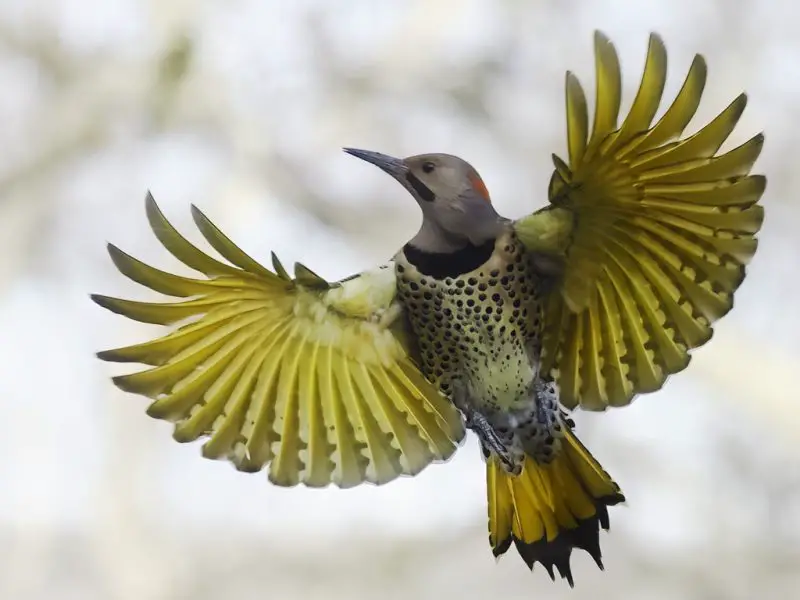
The Northern Flicker (Yellow-shafted form) is a medium-sized woodpecker with a brown, barred back, spotted underparts, and a bright yellow belly and underwings. Males have a black mustache mark and a red nape crescent, while females lack the mustache. Adults range from 11 to 12.2 inches long with a wingspan of 16.5 to 20 inches.
Unlike many woodpeckers, Northern Flickers often feed on the ground, searching for ants and beetles, which make up a large part of their diet. They are known for their loud, rolling “wick-a-wick-a-wick” calls and strong drumming on trees or metal surfaces.
In Texas, the Yellow-shafted Flicker is common in woodlands, forest edges, and open fields with scattered trees. They are most frequently observed in the eastern and northern regions, especially during migration and winter months.
Golden-fronted Woodpecker
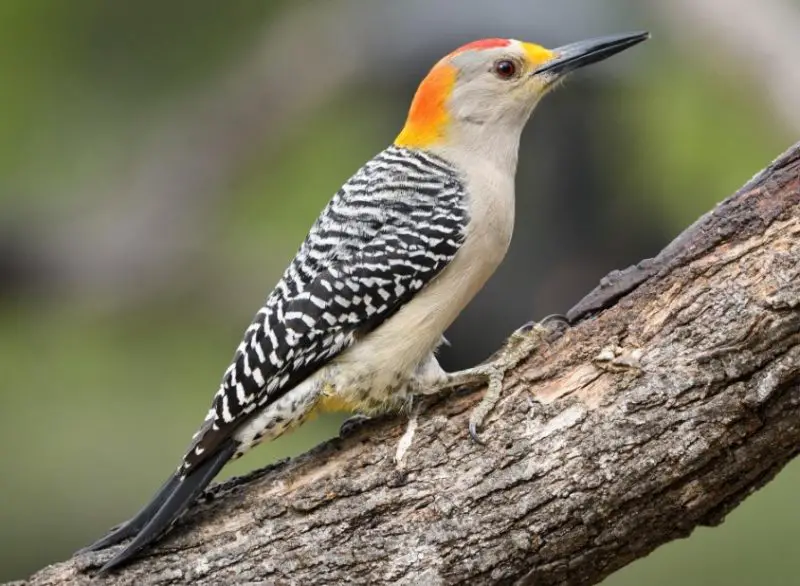
The Golden-fronted Woodpecker is a medium-sized woodpecker notable for its yellow-orange nape, pale yellowish belly tones, and black-and-white barred back. Males have a red crown patch, while females lack the red but share the same golden nape. Adults measure about 8.7 to 10.2 inches long with a wingspan of 16 to 17 inches.
This woodpecker forages by climbing tree trunks and branches, probing bark for insects, and occasionally eating fruits, nuts, and seeds. Its rolling “churr” call is a common sound in its range. Golden-fronted Woodpeckers are also frequent visitors to suet and peanut feeders in rural areas.
In Texas, they are year-round residents, most abundant in South Texas brushlands and the Rio Grande Valley. They favor mesquite woodlands, thorny scrub, and riparian forests but can also adapt to suburban areas with mature trees.
Golden-cheeked Warbler
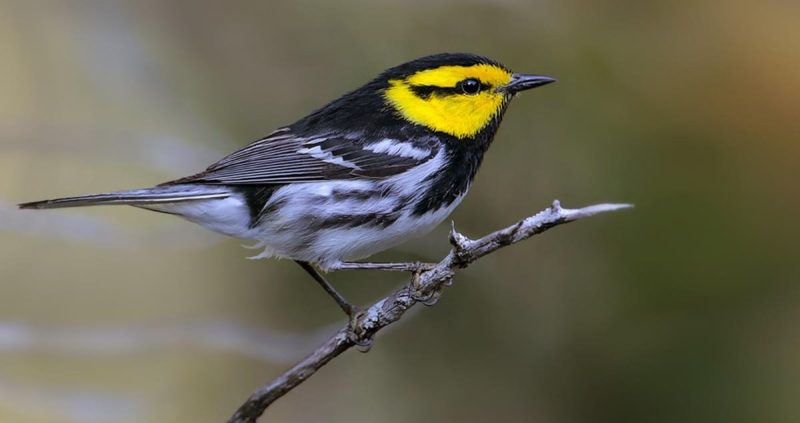
The Golden-cheeked Warbler is a small, striking warbler with bright yellow cheeks, a black throat, black back, and contrasting white underparts. This endangered species measures 4.3 to 4.7 inches in length with a wingspan of about 7.5 inches. Its unique facial pattern and vibrant colors make it easy to distinguish.
Golden-cheeked Warblers feed mainly on caterpillars and other insects, gleaning them from leaves and bark. Males sing a distinctive buzzy song from treetops during the breeding season, helping to establish territories and attract mates.
In Texas, this species breeds exclusively in central Texas juniper-oak woodlands, particularly where Ashe juniper is abundant. It is present only during the breeding season, arriving in spring and leaving by late summer to migrate to Central America.
Yellowish Flycatcher (vagrant)
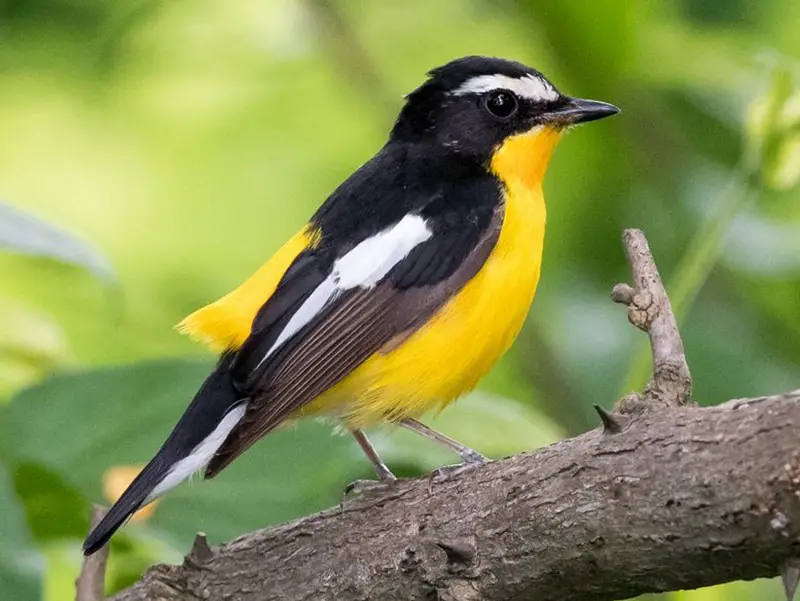
The Yellowish Flycatcher is a small, olive-green flycatcher with a deep yellow breast and throat, giving it a warm, bright appearance. It has a short, thin bill and faint eye-ring, typical of Empidonax flycatchers. Adults measure about 4.7 to 5.1 inches long with a wingspan of roughly 7 to 8 inches.
This species is an active insect hunter, sallying out from low perches to snatch flying insects or gleaning from foliage. Its soft “weet” call is rarely heard in Texas due to its vagrant status.
The Yellowish Flycatcher is a rare migrant in Texas, with occasional records mostly in southern parts of the state. It is native to Central America and typically inhabits humid forests, so sightings in Texas are considered accidental or exceptional.
Yellow-bellied Flycatcher
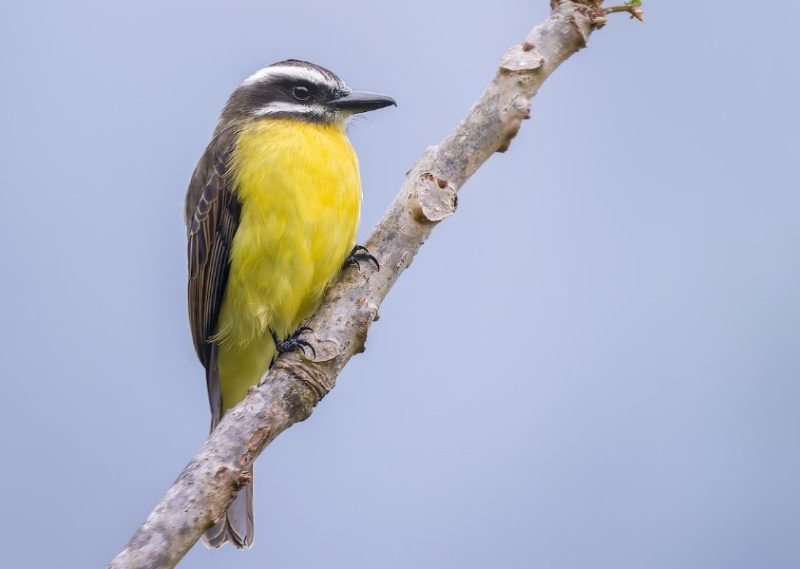
The Yellow-bellied Flycatcher is a small Empidonax flycatcher with olive-green upperparts, a bright yellow belly, and a short, broad bill. It has a complete white eye-ring and yellowish wash on the throat, helping distinguish it from other similar flycatchers. Adults are around 5.1 inches in length with a wingspan of 7.5 to 8 inches.
This species feeds on insects, making short aerial sallies from low perches in shaded forests. Its sharp “chu-wee” call and preference for dense, moist woods set it apart from other flycatchers.
In Texas, Yellow-bellied Flycatchers are uncommon migrants, usually seen during spring and fall. They are most often encountered in deep forests and wooded riparian corridors, primarily in the eastern part of the state.
FAQs about Birds with Yellow Bellies in Texas
What are some common birds with yellow bellies found in Texas?
Some common yellow-bellied birds in Texas include the Western Kingbird, Great Kiskadee, Yellow Warbler, Yellow-breasted Chat, and Orchard Oriole. These species are often spotted in open fields, woodlands, and backyard areas.
When is the best time to see yellow-bellied birds in Texas?
Many yellow-bellied birds can be seen during spring and summer, which is their breeding and migration season. Some, like the Evening Grosbeak, appear mainly in winter. Observing the right season increases your chances of spotting specific species.
Where do yellow-bellied birds prefer to live in Texas?
Yellow-bellied birds inhabit a variety of habitats, including woodlands, open fields, shrublands, and wetlands. For example, the Yellow-breasted Chat prefers dense thickets, while the Western Kingbird is commonly found in open grasslands and roadsides.
How can I identify a yellow-bellied bird?
Look for key characteristics such as the intensity and shade of yellow on the belly, head markings, size, and habitat. For instance, the Great Kiskadee has a bold black-and-white head pattern, whereas the Western Kingbird has a gray head and tail with a bright yellow belly.
Are yellow-bellied birds in Texas migratory or year-round residents?
Some yellow-bellied birds like the Western Kingbird and Yellow Warbler are migratory, appearing mainly during breeding seasons. Others, such as the Great Kiskadee and Golden-fronted Woodpecker, are year-round residents, especially in southern Texas.
What do yellow-bellied birds typically eat?
Their diets vary by species but commonly include insects, fruits, seeds, and nectar. For example, Kingbirds feed mostly on flying insects, while orioles enjoy fruit and nectar from flowers.
Can I attract yellow-bellied birds to my backyard in Texas?
Yes! Planting native shrubs and trees, providing water sources, and offering feeders with seeds, nectar, or suet can attract many yellow-bellied birds. Specific feeders for orioles or kingbirds with fruit or mealworms also help.
Are any yellow-bellied birds in Texas endangered or protected?
Yes, the Golden-cheeked Warbler, which has a distinctive yellow cheek patch, is an endangered species and is protected by law. It’s important to conserve its habitat, which is limited to Central Texas.

